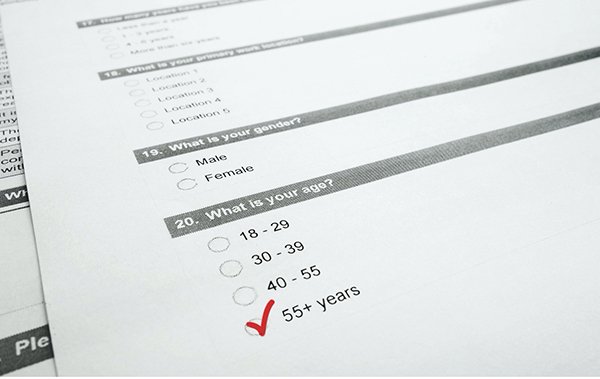
More than 15,000 workers filed a claim of workplace age discrimination with the Equal Employment Opportunity Commission (EEOC) in 2019 alone. This makes ageism one of the most reported forms of workplace discrimination.
How does an employee prove ageism discrimination? In the case of Gross v. FBL Financial Services, Inc, where an employee brought an action against his employers under the Age Discrimination in Employment Act (ADEA) alleging he was demoted because of his age, the lower courts ruled in his favor, but the Supreme Court overturned the lower court’s ruling holding that the plaintiff must prove that age was the reason for the discrimination. This decision compels plaintiffs to show age as a motivational factor or reason for their termination and elevates the level of proof needed to prove their claims.
The Age Discrimination in Employment Act of 1967 (ADEA) forbids discrimination against people who are 40 years or older. ADEA does not provide protections to workers under the age of 40.
This law prohibits discrimination in any aspect of employment including hiring, firing, pay, job assignment, promotion, layoff, training, benefits, and other term or condition of employment. For an employee to establish a prima facie case of Age Discrimination under the ADEA, the employee generally must show the following:
- That the employee was 40 years old or older at the time of the adverse employment action.
- The employee is qualified for the position in question.
- The employee has suffered an adverse employment action.
- The employee was replaced with someone sufficiently younger to permit a reasonable inference of age discrimination.
Recently, in the case of Babb v. Wilkie the plaintiff worked as a pharmacist at a Veterans Affairs Medical Center in Florida and helped to develop a program for older Veterans. The Veterans Affairs later developed a nationwide plan based on the one that the plaintiff and his team initially developed. The plaintiff and other coworkers, each of whom were over 50 years old, applied for promotions and training opportunities yet were denied the opportunity to advance. The Supreme Court held in this case that a plaintiff must show that age was a “but-for cause of discrimination “of the challenged employment action. This makes the burden of proof for age discrimination cases very hard to prove because even if the employment action is based on age, employers can often come up with alternative reasons for why they are taking said action that does not include age.
In EEOC v. Hawaii Health Care Professionals, Inc, the employer was ordered to pay $193,236 to a former employee for basing their employment decision on age. In 2008, Hawaii Health Care Professionals ordered the termination of 54 years-old office coordinator Debra Moreno. Moreno alleged Hawaii Health Care Professionals fired her after telling the manager that the plaintiff “looks old” “sounds old on the phone” and is ”like a bag of bones.”
While some cases of ageism can be hard to prove, others are obvious discrimination. The Office of Equity, Diversity, and Inclusion provides leadership, guidance, and aggressively impartial action for the two stages of the NIH administrative discrimination complaint process in compliance with the provisions of EEO laws/regulations. For more information visit the Resolution and Equity page.
For more articles on age discrimination, visit:
- Title VII Q&A: Age Discrimination
- Should the EEOC Extend Age Discrimination Protection to those Under 40?
Do you have a story idea for us? Do you want to submit a guest blog? If it's about equity, diversity, or inclusion, please submit to edi.stories@nih.gov.
For news, updates, and videos, follow or subscribe to EDI on: Twitter, Instagram, Blog, YouTube.






